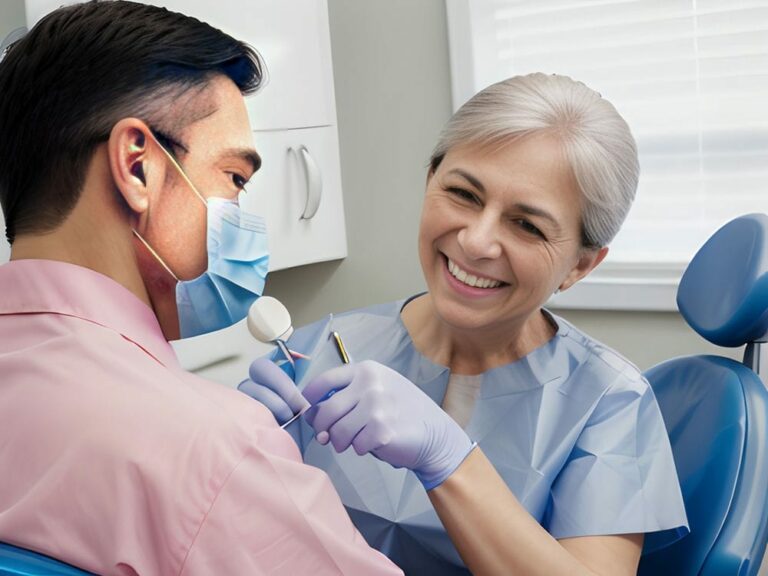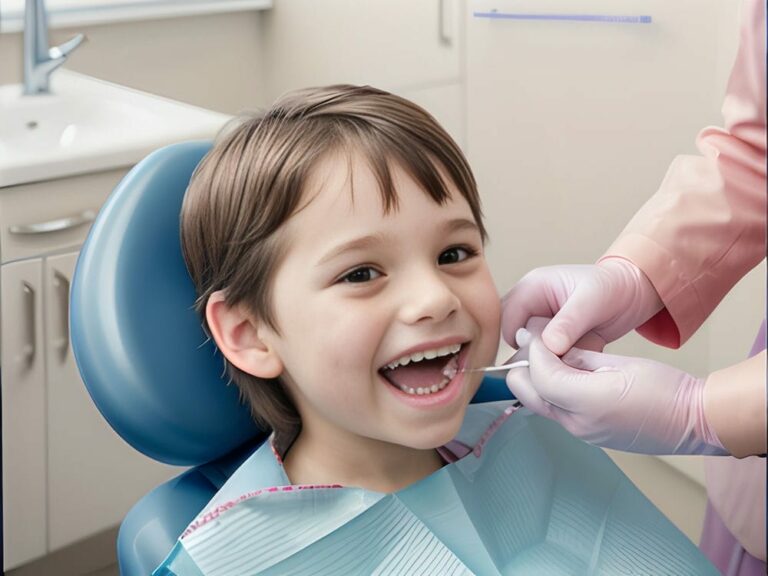Uncovering the Potential: Recent Advances in Stem Cell Research for Tooth Regeneration
Uncovering the Potential: Recent Advances in Stem Cell Research for Tooth Regeneration
In recent years, there have been significant breakthroughs in stem cell research that hold immense potential for tooth regeneration. Stem cells are undifferentiated cells that can develop into different types of specialized cells in the body. Scientists have been exploring ways to utilize these remarkable cells to regenerate damaged or lost teeth. This promising field of research could revolutionize dental healthcare and provide innovative solutions for individuals suffering from tooth loss.
One of the recent advancements in stem cell research is the discovery of dental stem cells, which are found within the dental pulp of teeth. These dental stem cells possess a unique ability to differentiate into various types of tooth tissues, including dentin, pulp, and cementum. This finding has opened up new possibilities for regrowing damaged or decayed teeth naturally. By harnessing the potential of these dental stem cells, scientists hope to develop techniques that can stimulate their growth and guide them to regenerate functional and fully-formed teeth.
Furthermore, researchers have also made progress in identifying specific signaling molecules that play a crucial role in tooth development and regeneration. These molecules act as chemical messengers, guiding stem cells during tooth formation. By understanding how these signaling molecules function, scientists can manipulate them to enhance tooth regeneration processes. This knowledge has paved the way for innovative approaches such as tissue engineering, where artificial scaffolds combined with stem cells are used to recreate complex tooth structures.
The integration of healthcare and technology is further propelling advancements in this field. Biotechnology companies are investing heavily in developing cutting-edge technologies that can facilitate efficient extraction and preservation of dental stem cells from extracted teeth or other sources like wisdom teeth or baby teeth. These advancements aim to make these procedures more accessible and cost-effective for wider application in regenerative dentistry.
Overall, recent advances in stem cell research offer a promising pathway towards tooth regeneration. With continued efforts and collaboration between scientists, healthcare professionals, and biotechnology companies, this field holds the potential to revolutionize dental healthcare by providing innovative solutions for tooth loss and improving overall oral health. The integration of technology and biotechnology will play a crucial role in driving these advancements forward, making tooth regeneration a reality in the near future.
The Science Behind Tooth Regeneration: Exploring the Role of Stem Cells in Dentistry
In recent years, there have been significant advancements in stem cell research that hold immense potential for tooth regeneration. Dental stem cells, found within the dental pulp of teeth, have been discovered to possess a unique ability to differentiate into various types of tooth tissues. This breakthrough has opened up new possibilities for regrowing damaged or decayed teeth naturally.
Researchers have also made progress in identifying specific signaling molecules that play a crucial role in tooth development and regeneration. By understanding how these molecules function, scientists can manipulate them to enhance tooth regeneration processes. This knowledge has paved the way for innovative approaches such as tissue engineering, where artificial scaffolds combined with stem cells are used to recreate complex tooth structures.
The integration of healthcare and technology is further propelling advancements in this field. Biotechnology companies are investing heavily in developing cutting-edge technologies that can facilitate efficient extraction and preservation of dental stem cells. These advancements aim to make regenerative dentistry more accessible and cost-effective for wider application.
Overall, recent advancements in stem cell research offer an innovative pathway towards tooth regeneration. With continued collaboration between scientists, healthcare professionals, and biotechnology companies, this field holds the potential to revolutionize dental healthcare by providing improved treatments for tooth loss and enhancing overall oral health. The integration of technology and biotechnology will play a crucial role in driving these innovations forward, making tooth regeneration a reality in the near future.
Innovative Approaches: Breakthroughs in Stem Cell Therapy for Dental Tissue Regeneration
Exploring the Latest Stem Cell Breakthroughs and Their Impact on Tooth Regeneration
In recent years, there have been significant advancements in stem cell research that hold immense potential for tooth regeneration. Dental stem cells, found within the dental pulp of teeth, possess a unique ability to differentiate into various types of tooth tissues. This breakthrough has opened up new possibilities for regrowing damaged or decayed teeth naturally.
One innovative approach that researchers have been focusing on is tissue engineering. By combining artificial scaffolds with dental stem cells, scientists aim to recreate complex tooth structures. This approach holds promise for not only regenerating single teeth but also entire dental arches. The use of tissue engineering in dentistry could revolutionize oral healthcare by providing more effective and long-lasting solutions for tooth loss.
The integration of healthcare and technology is further propelling advancements in the field of regenerative dentistry. Biotechnology companies are investing in cutting-edge technologies that can efficiently extract and preserve dental stem cells, making them more accessible and cost-effective for wider application. This integration allows for greater collaboration between scientists, healthcare professionals, and biotechnology companies to drive forward innovations in oral biology and regenerative medicine.
With continued research and development, these recent breakthroughs in stem cell therapy offer an innovative pathway towards tooth regeneration. By harnessing the potential of dental stem cells and leveraging the power of technology, we can greatly improve treatments for tooth loss and enhance overall oral health. The future holds exciting possibilities as we continue to explore the potential of stem cells in transforming dentistry into a regenerative science.
From Lab to Clinic: Translating Stem Cell Research into Dental Treatments for Tooth Regeneration
In recent years, there have been significant advancements in stem cell research that hold immense potential for tooth regeneration. Dental stem cells, found within the dental pulp of teeth, possess a unique ability to differentiate into various types of tooth tissues. This breakthrough has opened up new possibilities for regrowing damaged or decayed teeth naturally.
One innovative approach that researchers have been focusing on is tissue engineering. By combining artificial scaffolds with dental stem cells, scientists aim to recreate complex tooth structures. This approach holds promise for not only regenerating single teeth but also entire dental arches. The use of tissue engineering in dentistry could revolutionize oral healthcare by providing more effective and long-lasting solutions for tooth loss.
The integration of healthcare and technology is further propelling advancements in the field of regenerative dentistry. Biotechnology companies are investing in cutting-edge technologies that can efficiently extract and preserve dental stem cells, making them more accessible and cost-effective for wider application. This integration allows for greater collaboration between scientists, healthcare professionals, and biotechnology companies to drive forward innovations in oral biology and regenerative medicine.
With continued research and development, these recent breakthroughs in stem cell therapy offer an innovative pathway towards tooth regeneration. By harnessing the potential of dental stem cells and leveraging the power of technology, we can greatly improve treatments for tooth loss and enhance overall oral health. The future holds exciting possibilities as we continue to explore the potential of stem cells in transforming dentistry into a regenerative science.
Growth factors present in dental pulp-derived mesenchymal stem cells actively promote tissue growth and repair mechanisms within the oral cavity after transplantation. Dentists can harness the regenerative capabilities of these stem cells to aid in healing processes following procedures such as root canal treatment or extraction. By utilizing stem cell therapy, dentists can provide their patients with more efficient healing times and enhanced outcomes.
In conclusion, the latest breakthroughs in stem cell research have paved the way for remarkable advancements in tooth regeneration. With the potential of dental stem cells and the integration of technology, dentistry is evolving into a regenerative science. Dentists can utilize these advancements to enhance treatments, promote tissue growth and repair, and ultimately improve oral health outcomes for their patients. The future holds great promise as we continue to explore the transformative potential of stem cells in dentistry.
Harnessing the Power of Stem Cells: Promising Techniques for Restoring Damaged Teeth
The field of regenerative dentistry has witnessed remarkable advancements in recent years, thanks to breakthroughs in stem cell research. Dental stem cells, which can be found in the dental pulp of teeth, have demonstrated a unique ability to differentiate into various types of tooth tissues. This exciting discovery has opened up new possibilities for regenerating damaged or decayed teeth naturally.
One promising approach that researchers are focusing on is tissue engineering. By combining artificial scaffolds with dental stem cells, scientists aim to recreate complex tooth structures. This technique not only holds potential for regenerating single teeth but also entire dental arches. The use of tissue engineering in dentistry could revolutionize oral healthcare by providing more effective and long-lasting solutions for tooth loss.
The integration of healthcare and technology is further propelling advancements in the field of regenerative dentistry. Biotechnology companies are investing in cutting-edge technologies that can efficiently extract and preserve dental stem cells, making them more accessible and cost-effective for wider application. This integration allows for greater collaboration between scientists, healthcare professionals, and biotechnology companies to drive forward innovations in oral biology and regenerative medicine.
With continued research and development, these recent breakthroughs in stem cell therapy offer an innovative pathway towards tooth regeneration. By harnessing the potential of dental stem cells and leveraging the power of technology, we can greatly improve treatments for tooth loss and enhance overall oral health. The future holds exciting possibilities as we continue to explore the potential of stem cells in transforming dentistry into a regenerative science.
Growth factors present in dental pulp-derived mesenchymal stem cells actively promote tissue growth and repair mechanisms within the oral cavity after transplantation. Dentists can harness the regenerative capabilities of these stem cells to aid in healing processes following procedures such as root canal treatment or extraction. By utilizing stem cell therapy, dentists can provide their patients with more efficient healing times and enhanced outcomes.
In conclusion, the latest breakthroughs in stem cell research have paved the way for remarkable advancements in tooth regeneration. With the potential of dental stem cells and the integration of technology, dentistry is evolving into a regenerative science. Dentists can utilize these advancements to enhance treatments, promote tissue growth and repair, and ultimately improve oral health outcomes for their patients. The future holds great promise as we continue to explore the transformative potential of stem cells in dentistry.
Beyond Traditional Dentistry: How Stem Cell Breakthroughs are Revolutionizing Tooth Regeneration
The field of regenerative dentistry has witnessed remarkable advancements in recent years, thanks to breakthroughs in stem cell research. Dental stem cells, which can be found in the dental pulp of teeth, have demonstrated a unique ability to differentiate into various types of tooth tissues. This exciting discovery has opened up new possibilities for regenerating damaged or decayed teeth naturally.
One promising approach that researchers are focusing on is tissue engineering. By combining artificial scaffolds with dental stem cells, scientists aim to recreate complex tooth structures. This technique not only holds potential for regenerating single teeth but also entire dental arches. The use of tissue engineering in dentistry could revolutionize oral healthcare by providing more effective and long-lasting solutions for tooth loss.
The integration of healthcare and technology is further propelling advancements in the field of regenerative dentistry. Biotechnology companies are investing in cutting-edge technologies that can efficiently extract and preserve dental stem cells, making them more accessible and cost-effective for wider application. This integration allows for greater collaboration between scientists, healthcare professionals, and biotechnology companies to drive forward innovations in oral biology and regenerative medicine.
With continued research and development, these recent breakthroughs in stem cell therapy offer an innovative pathway towards tooth regeneration. By harnessing the potential of dental stem cells and leveraging the power of technology, we can greatly improve treatments for tooth loss and enhance overall oral health. The future holds exciting possibilities as we continue to explore the potential of stem cells in transforming dentistry into a regenerative science.
Growth factors present in dental pulp-derived mesenchymal stem cells actively promote tissue growth and repair mechanisms within the oral cavity after transplantation. Dentists can harness the regenerative capabilities of these stem cells to aid in healing processes following procedures such as root canal treatment or extraction. By utilizing stem cell therapy, dentists can provide their patients with more efficient healing times and enhanced outcomes.
In summary, the latest breakthroughs in stem cell research have paved the way for remarkable advancements in tooth regeneration. With the potential of dental stem cells and the integration of technology, dentistry is evolving into a regenerative science. Dentists can utilize these advancements to enhance treatments, promote tissue growth and repair, and ultimately improve oral health outcomes for their patients. The future holds great promise as we continue to explore the transformative potential of stem cells in dentistry.
Breaking New Ground: Cutting-edge Discoveries in Dental Stem Cell Research
The field of regenerative dentistry has experienced significant advancements in recent years, thanks to breakthroughs in stem cell research. Dental stem cells, found in the dental pulp of teeth, have shown a unique ability to differentiate into various types of tooth tissues. This exciting discovery has opened up new possibilities for naturally regenerating damaged or decayed teeth.
One promising approach that researchers are focusing on is tissue engineering. By combining artificial scaffolds with dental stem cells, scientists aim to recreate complex tooth structures. This technique not only holds potential for regenerating single teeth but also entire dental arches. The use of tissue engineering in dentistry could revolutionize oral healthcare by providing more effective and long-lasting solutions for tooth loss.
The integration of healthcare and technology is further driving advancements in the field of regenerative dentistry. Biotechnology companies are investing in cutting-edge technologies that can efficiently extract and preserve dental stem cells, making them more accessible and cost-effective for wider application. This integration allows for greater collaboration between scientists, healthcare professionals, and biotechnology companies to drive forward innovations in oral biology and regenerative medicine.
With continued research and development, these recent breakthroughs in stem cell therapy offer an innovative pathway towards tooth regeneration. By harnessing the potential of dental stem cells and leveraging the power of technology, we can greatly improve treatments for tooth loss and enhance overall oral health. The future holds exciting possibilities as we explore the potential of stem cells in transforming dentistry into a regenerative science.
Growth factors present in dental pulp-derived mesenchymal stem cells actively promote tissue growth and repair mechanisms within the oral cavity after transplantation. Dentists can harness the regenerative capabilities of these stem cells to aid in healing processes following procedures such as root canal treatment or extraction. By utilizing stem cell therapy, dentists can provide their patients with more efficient healing times and enhanced outcomes.
In summary, the latest breakthroughs in stem cell research have paved the way for remarkable advancements in tooth regeneration. With the potential of dental stem cells and the integration of technology, dentistry is evolving into a regenerative science. Dentists can utilize these advancements to enhance treatments, promote tissue growth and repair, and ultimately improve oral health outcomes for their patients. The future holds great promise as we continue to explore the transformative potential of stem cells in dentistry.
Unleashing the Potential: The Future of Tooth Regeneration through Stem Cell Technology
Exploring the Latest Stem Cell Breakthroughs and Their Impact on Tooth Regeneration
The field of regenerative dentistry has made significant strides in recent years, thanks to breakthroughs in stem cell research. Dental stem cells, found in the dental pulp of teeth, have shown a unique ability to differentiate into various types of tooth tissues. This exciting discovery has opened up new possibilities for naturally regenerating damaged or decayed teeth.
One promising approach that researchers are focusing on is tissue engineering. By combining artificial scaffolds with dental stem cells, scientists aim to recreate complex tooth structures. This technique not only holds potential for regenerating single teeth but also entire dental arches. The use of tissue engineering in dentistry could revolutionize oral healthcare by providing more effective and long-lasting solutions for tooth loss.
The integration of healthcare and technology is further driving advancements in the field of regenerative dentistry. Biotechnology companies are investing in cutting-edge technologies that can efficiently extract and preserve dental stem cells, making them more accessible and cost-effective for wider application. This integration allows for greater collaboration between scientists, healthcare professionals, and biotechnology companies to drive forward innovations in oral biology and regenerative medicine.
With continued research and development, these recent breakthroughs in stem cell therapy offer an innovative pathway towards tooth regeneration. By harnessing the potential of dental stem cells and leveraging the power of technology, we can greatly improve treatments for tooth loss and enhance overall oral health. The future holds exciting possibilities as we explore the potential of stem cells in transforming dentistry into a regenerative science.
Growth factors present in dental pulp-derived mesenchymal stem cells actively promote tissue growth and repair mechanisms within the oral cavity after transplantation. Dentists can harness the regenerative capabilities of these stem cells to aid in healing processes following procedures such as root canal treatment or extraction. By utilizing stem cell therapy, dentists can provide their patients with more efficient healing times and enhanced outcomes.
In summary, the latest breakthroughs in stem cell research have paved the way for remarkable advancements in tooth regeneration. With the potential of dental stem cells and the integration of technology, dentistry is evolving into a regenerative science. Dentists can utilize these advancements to enhance treatments, promote tissue growth and repair, and ultimately improve oral health outcomes for their patients. The future holds great promise as we continue to explore the transformative potential of stem cells in dentistry.
Exploring Novel Strategies: Advancements in Dental Science and Stem Cell Therapies
The field of regenerative dentistry has made significant strides in recent years, thanks to breakthroughs in stem cell research. These breakthroughs have led to the discovery of dental stem cells, which have shown a unique ability to differentiate into various types of tooth tissues. This exciting finding has opened up new possibilities for naturally regenerating damaged or decayed teeth.
One promising approach that researchers are focusing on is tissue engineering. By combining artificial scaffolds with dental stem cells, scientists aim to recreate complex tooth structures. This technique not only holds potential for regenerating single teeth but also entire dental arches. The use of tissue engineering in dentistry could revolutionize oral healthcare by providing more effective and long-lasting solutions for tooth loss.
The integration of healthcare and technology is further driving advancements in the field of regenerative dentistry. Biotechnology companies are investing in cutting-edge technologies that can efficiently extract and preserve dental stem cells, making them more accessible and cost-effective for wider application. This integration allows for greater collaboration between scientists, healthcare professionals, and biotechnology companies to drive forward innovations in oral biology and regenerative medicine.
With continued research and development, these recent breakthroughs in stem cell therapy offer an innovative pathway towards tooth regeneration. By harnessing the potential of dental stem cells and leveraging the power of technology, we can greatly improve treatments for tooth loss and enhance overall oral health. The future holds exciting possibilities as we explore the potential of stem cells in transforming dentistry into a regenerative science.
Growth factors present in dental pulp-derived mesenchymal stem cells actively promote tissue growth and repair mechanisms within the oral cavity after transplantation. Dentists can harness the regenerative capabilities of these stem cells to aid in healing processes following procedures such as root canal treatment or extraction. By utilizing stem cell therapy, dentists can provide their patients with more efficient healing times and enhanced outcomes.
In summary, the latest breakthroughs in stem cell research have paved the way for remarkable advancements in tooth regeneration. With the potential of dental stem cells and the integration of technology, dentistry is evolving into a regenerative science. Dentists can utilize these advancements to enhance treatments, promote tissue growth and repair, and ultimately improve oral health outcomes for their patients. The future holds great promise as we continue to explore the transformative potential of stem cells in dentistry.
A Bright Smile Ahead: The Implications of Stem Cell Breakthroughs on the Future of Dentistry
The field of regenerative dentistry has seen significant advancements in recent years, thanks to breakthroughs in stem cell research. These breakthroughs have led to the discovery of dental stem cells, which have shown a unique ability to differentiate into various types of tooth tissues. This exciting finding has opened up new possibilities for naturally regenerating damaged or decayed teeth.
One promising approach that researchers are focusing on is tissue engineering. By combining artificial scaffolds with dental stem cells, scientists aim to recreate complex tooth structures. This technique not only holds potential for regenerating single teeth but also entire dental arches. The use of tissue engineering in dentistry could revolutionize oral healthcare by providing more effective and long-lasting solutions for tooth loss.
The integration of healthcare and technology is further driving advancements in the field of regenerative dentistry. Biotechnology companies are investing in cutting-edge technologies that can efficiently extract and preserve dental stem cells, making them more accessible and cost-effective for wider application. This integration allows for greater collaboration between scientists, healthcare professionals, and biotechnology companies to drive forward innovations in oral biology and regenerative medicine.
With continued research and development, these recent breakthroughs in stem cell therapy offer an innovative pathway towards tooth regeneration. By harnessing the potential of dental stem cells and leveraging the power of technology, we can greatly improve treatments for tooth loss and enhance overall oral health. The future holds exciting possibilities as we explore the potential of stem cells in transforming dentistry into a regenerative science.
FAQs
Q: What are stem cells?,
A: Stem cells are undifferentiated cells that have the ability to develop into different types of cells in the body.,
Q: How can stem cells be used in tooth regeneration?,
A: Stem cells can be used in tooth regeneration by being guided to differentiate into the specific types of cells needed for tooth growth and repair.,
Q: What are the latest breakthroughs in stem cell research related to tooth regeneration?,
A: Some recent breakthroughs in stem cell research for tooth regeneration include the discovery of new sources of stem cells and improved methods for guiding their differentiation.,
Q: Which types of stem cells are being used for tooth regeneration?,
A: Different types of stem cells are being used for tooth regeneration, including dental pulp stem cells, periodontal ligament stem cells, and embryonic stem cells.,
Q: Can stem cell therapy be used to regrow an entire tooth?,
A: While it is still a developing field, researchers are working towards regrowing an entire tooth using stem cell therapy, but it is not yet a fully realized possibility.,
Q: Are there any ethical concerns related to using embryonic stem cells for tooth regeneration?,
A: Yes, the use of embryonic stem cells for tooth regeneration raises ethical concerns due to the destruction of embryos in the process.,
Q: How long does it take for stem cell-based tooth regeneration to occur?,
A: The time it takes for stem cell-based tooth regeneration to occur can vary depending on the specific technique used, but it generally takes several weeks to months.,
Q: Can stem cell therapy be used to repair damaged or decayed teeth?,
A: Yes, stem cell therapy shows potential for repairing damaged or decayed teeth by promoting the growth of new dental tissue.,
Q: Are there any risks associated with stem cell-based tooth regeneration?,
A: While stem cell-based tooth regeneration is still being researched, potential risks include the formation of abnormal tissue or the rejection of the newly generated cells by the body’s immune system.,
Q: Will stem cell-based tooth regeneration be available to the general public anytime soon?,
A: The availability of stem cell-based tooth regeneration to the general public will depend on the progress of ongoing research, clinical trials, and regulatory approval processes, so a specific timeline cannot be determined at this point.




















